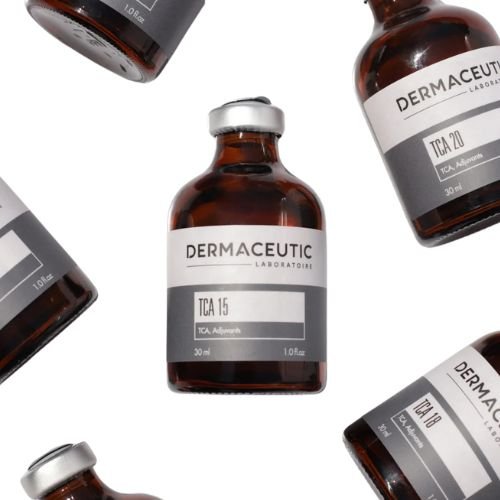
-
Skin peels may not be suitable or should only be performed with caution for individuals with the following medical conditions:
Are currently using strong topical medications (e.g. prescription retinoids, Accutane)
Have recently had laser treatments, waxing, or other exfoliating procedures on the same area
Have not followed the required pre-peel skin prep instructions (such as avoiding sun exposure or using priming actives)
Active herpes simplex (cold sores) or a history of frequent outbreaks. Will need to take a oral antiviral before their treatment
Eczema, psoriasis, or dermatitis in the treatment area
Rosacea (depending on severity and type of peel)
Diabetes, particularly if healing is compromised
Autoimmune disorders that affect skin healing (e.g. lupus, scleroderma)
Immunosuppressed individuals (e.g. due to HIV, cancer treatments, or immunosuppressive medications)
Severe or cystic acne (unless under medical supervision)
Recent radiation therapy or chemotherapy
Bleeding disorders or those on blood-thinning medications
Keloid scarring or hypertrophic scarring tendency
Pregnancy and breastfeeding (certain peels may still be safe—always consult first)
-
During your skin peel treatment, your skin will be thoroughly cleansed before a professional-grade peel solution is applied. You may feel a mild tingling, warmth, or slight stinging sensation as the active ingredients begin to exfoliate and renew the skin.
-
The peel works to dissolve dead skin cells, unclog pores, and stimulate cell turnover. Depending on the type and depth of the peel, some redness or light flaking may occur in the days following, revealing fresher, smoother, and more radiant skin beneath.
-
To ensure optimal results and minimise sensitivity, preparation includes priming the skin with active ingredients particularly Vitamin C to strengthen and brighten the skin in the weeks leading up to your treatment. It’s also essential to avoid direct sun exposure for at least 2 weeks prior, as this helps reduce the risk of irritation or post-treatment pigmentation.
-
Keep skin hydrated with a gentle, nourishing moisturiser.
Avoid direct sun exposure and always wear broad-spectrum SPF 30+ daily.
Do not pick or peel flaking skin let it shed naturally to avoid scarring or pigmentation.
Avoid active ingredients like retinol, AHAs/BHAs, and exfoliants for at least 5–7 days or as directed.
Skip heat treatments (e.g., saunas, hot showers, intense workouts) for 48 hours post-peel.
Stick to gentle skincare and avoid makeup for the first 24 hours if possible.
-
Wear comfortable, loose fitting clothing to your appointment, especially if you're receiving a facial or body treatment. Avoid tight collars or high necklines, as your décolletage may be included in the treatment.
-
Skin peels can be an excellent option if you're looking to improve concerns like dullness, uneven texture, pigmentation, acne, fine lines, or congestion. They work by gently exfoliating the top layers of skin to reveal a fresher, smoother complexion underneath. Peels can be tailored to suit most skin types and conditions, including sensitive skin, when properly prepped. However, they may not be suitable if you're currently using strong actives (like retinoids), have broken or very reactive skin, or are pregnant (depending on the peel type). A consultation is recommended to assess your skin and determine the most suitable peel for your goals.
-
Many clients notice an immediate glow and improved skin texture within a few days. Depending on the strength of the peel, mild flaking or shedding may occur as dead skin cells are lifted away. Deeper improvements such as reduced pigmentation, refined pores, and softened fine lines typically become visible after a series of treatments over several weeks.
-
Sunny or tropical destinations should be avoided. For optimal safety and results, wait at least 2–3 weeks before going on a sun-intensive holiday. Freshly peeled skin is more sensitive to UV rays, which increases the risk of pigmentation, irritation, or damage. If travel is unavoidable, be diligent with sun protection: wear SPF 50+, a wide-brimmed hat, and avoid direct sun during peak hours.
-
Immediately after a skin peel, your skin may feel slightly warm, tight, or sensitive. It’s common to experience mild redness, similar to a light sunburn, especially with stronger peels. If the skin feels too hot or uncomfortable, applying a cold compress (covered with a teatowel) can help soothe and cool the area. Over the next few days, you may notice slight peeling, dryness, or flaking as the skin exfoliates and new, fresh skin emerges. This is completely normal and a sign that the treatment is working.
To ensure comfort, keep your skin well moisturised, avoid sun exposure, and follow your aftercare instructions. Most of the initial sensitivity will subside within a few hours to a day, and any flaking typically begins 2-3 days post-treatment.
-
After completing a course of skin peels, skin needling is a highly effective next step to target skin tightening and age-related concerns. This treatment stimulates collagen and elastin production, helping to firm the skin, refine texture, and reduce fine lines.
Skin Peels
Frequently Asked Questions

